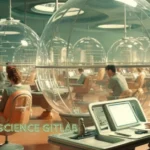Introduction to Vlineperol and its Concept
Imagine a world where commuting is not just efficient but also enjoyable. Enter Vlineperol, a groundbreaking concept that promises to change the way we think about transportation. With urban congestion and pollution reaching critical levels, innovative solutions are more important than ever. Vlineperol stands at the forefront of this transformation, merging cutting-edge technology with sustainable practices. This new mode of transport could redefine our daily journeys and reshape cities for generations to come. Are you ready to explore what makes Vlineperol a game changer? Let’s dive in!
Advantages of Vlineperol over Traditional Transportation Methods
Vlineperol stands out in the realm of transportation. Its design prioritizes efficiency and speed, making commutes quicker than traditional methods.
One significant advantage is cost-effectiveness. Vlineperol reduces operational costs through advanced technology. This means lower fares for passengers.
Another aspect is flexibility. Unlike rigid public transport schedules, Vlineperol adapts to real-time demands, offering more convenience for users.
Safety also sees improvement with Vlineperol’s innovative materials and design features. Enhanced stability and smarter navigation systems lead to fewer accidents compared to conventional vehicles.
Furthermore, the user experience is elevated. Modern interfaces and seamless connectivity create a smoother journey from start to finish, appealing to tech-savvy individuals who crave comfort during travel.
With these advantages combined, Vlineperol proves itself as a formidable alternative that can reshape how we think about getting from point A to B.
How Vlineperol Works: Technology and Design
Vlineperol represents a cutting-edge approach to transportation, blending innovative technology with sleek design. At its core is a network of autonomous vehicles that communicate intelligently with each other.
These vehicles are powered by advanced electric propulsion systems, ensuring minimal environmental impact. The design emphasizes aerodynamics and lightweight materials to enhance efficiency.
Equipped with state-of-the-art sensors and AI algorithms, Vlineperol cars navigate seamlessly through urban landscapes. They adapt in real-time to traffic conditions, optimizing routes for speed and safety.
User experience is prioritized within the cockpit’s minimalist interface. Riders can enjoy smooth travel while accessing personalized features tailored to their preferences.
With its modular framework, Vlineperol allows for easy scalability. New routes or vehicle types can be introduced without major disruptions, enabling cities to evolve alongside their transport needs efficiently.
Potential Impact on the Environment and Sustainability
Vlineperol promises a transformative shift in transportation by prioritizing environmental impact and sustainability. Its design emphasizes energy efficiency, reducing reliance on fossil fuels.
By utilizing advanced technology, Vlineperol can significantly lower carbon emissions. This innovation aligns with global efforts to combat climate change and promote cleaner air.
Moreover, Vlineperol’s infrastructure is focused on integrating renewable energy sources. Solar panels and regenerative braking systems contribute to its green credentials.
The potential for reduced traffic congestion also plays a role in lessening urban pollution levels. With fewer vehicles idling in traffic, the overall urban ecosystem benefits from improved air quality.
Sustainability extends beyond just operations; Vlineperole encourages eco-friendly practices among users. Green commuting options might lead to increased public awareness about sustainable living habits.
Challenges and Limitations of Implementing Vlineperol
Implementing Vlineperol is not without its hurdles. One of the primary challenges lies in infrastructure adaptation. Existing transportation systems require significant upgrades or complete overhauls to accommodate this innovative solution.
Cost is another major concern. The initial investment for technology and construction can be daunting for municipalities and private investors alike. Many may hesitate due to uncertainties about long-term returns.
Public acceptance also plays a crucial role. New concepts often face skepticism from potential users who are accustomed to traditional transport methods. Building trust and demonstrating reliability will take time.
Additionally, regulatory frameworks need modifications to support such advancements in transportation technology. Navigating through bureaucratic channels can slow down progress significantly.
Competition from other emerging technologies poses a risk. As various companies develop alternative solutions, distinguishing Vlineperol’s unique advantages becomes essential in capturing market interest.
Future Possibilities and Expansion Plans for Vlineperol
The future of Vlineperol is brimming with possibilities. As technology advances, the potential for integration into smart city frameworks grows. Imagine a network where Vlineperoel seamlessly connects with other modes of transport, enhancing urban mobility.
Expansion plans are already underway in several major cities worldwide. Partnerships with local governments aim to facilitate quicker rollouts and greater reach. This collaboration could pave the way for widespread adoption, making it an essential element in modern transit systems.
Moreover, continuous innovation within its design and functionality promises to elevate user experience further. Enhancements in safety features and energy efficiency are on the horizon.
Global markets present untapped opportunities as well. The demand for sustainable transportation solutions is rising rapidly; Vlineperole is poised to meet this challenge head-on by expanding its footprint beyond urban landscapes into suburban areas too.
Conclusion: The Future of Transportation is Here with Vlineperol
The future of transportation is evolving, and Vlineperol stands at the forefront. As cities grow and the demand for efficient travel increases, innovations like Vlineperol offer a glimpse into what could be possible. With its advanced technology and sustainable design, it promises to reshape how we think about moving from one place to another.
This revolutionary approach not only enhances convenience but also prioritizes environmental sustainability. By reducing carbon footprints and minimizing congestion, Vlineperol aligns with global efforts toward a greener planet.
While challenges remain in terms of implementation and widespread adoption, the potential benefits far outweigh these obstacles. The vision behind Vlineperol could pave new pathways in urban transport systems across the globe.
As we look ahead, it’s clear that solutions such as Vlineperols will play an essential role in our transportation landscape. Embracing this innovation might just lead us toward smarter cities and more responsible travel options for everyone. The journey has begun; are you ready to hop on board?
FAQs
What is Vlineperol?
Vlineperol is a revolutionary transportation concept designed to enhance commuting efficiency and enjoyment. It combines advanced technology with sustainable practices to create a new mode of transport that could significantly reshape urban mobility and reduce congestion.
How does Vlineperol differ from traditional transportation methods?
Vlineperol offers advantages such as lower operational costs, real-time adaptability, improved safety, and a superior user experience compared to traditional methods. It uses cutting-edge technology to provide faster, more flexible, and eco-friendly commutes.
What technologies power Vlineperol?
Vlineperol operates on a network of autonomous vehicles powered by electric propulsion systems. It integrates advanced sensors, AI algorithms, and lightweight materials to optimize navigation, efficiency, and user experience.
How does Vlineperol impact the environment?
Vlineperol reduces carbon emissions by relying on electric power and incorporating renewable energy sources like solar panels. Its design and operational features contribute to lower pollution levels and promote sustainability in urban areas.
What challenges are associated with implementing Vlineperol?
Key challenges include the need for infrastructure upgrades, high initial costs, public skepticism, regulatory adjustments, and competition from other emerging technologies. Addressing these issues is crucial for successful adoption and integration of Vlineperols.







